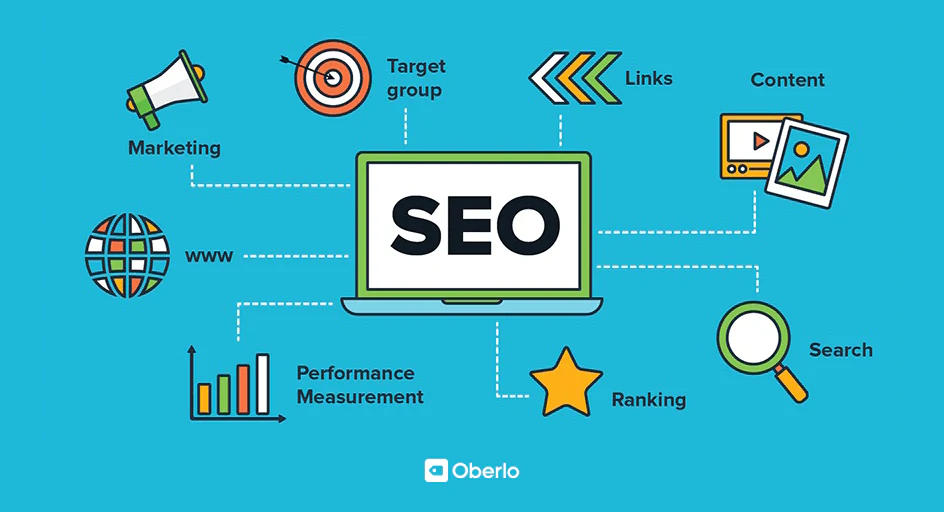Understanding the Function of Individual Experience in Modern Search Engine Optimization Practices
In an era where digital presence can make or damage a company, understanding the junction in between user experience (UX) and modern-day SEO practices is a lot more crucial than ever before. As search engines evolve, they significantly prioritize internet sites that provide seamless, appealing experiences to users. Just how do these elements precisely influence search positions?
The Development of Search Engine Optimization
For many years, the landscape of search engine optimization (SEO) has undergone significant improvement, showing the vibrant nature of digital technology and individual behavior. Initially, SEO was largely regarding keyword padding and link-building strategies, focusing greatly on manipulating internet search engine formulas to improve internet site rankings. As search engines came to be a lot more innovative, these techniques began to lose performance and significance.

In addition, mobile optimization and voice search have become integral elements of search engine optimization approaches. With the spreading of mobile phones, making sure sites are mobile-friendly has actually come to be a necessity. Voice search, driven by virtual assistants like Siri and Alexa, has even more shifted search engine optimization techniques towards natural language processing and conversational material.
Fundamentally, the advancement of SEO mirrors a broader trend in the direction of improving customer complete satisfaction by aligning digital web content with the nuanced assumptions of contemporary customers.
Secret UX Components in SEO
In the world of search engine optimization, key customer experience (UX) components are essential for enhancing both user contentment and search engine positions. Web sites maximized for mobile usage not just promote a seamless user experience however likewise straighten with Google's mobile-first indexing strategy.
Clear call-to-action (CTA) buttons assist individuals in the direction of preferred activities, improving conversion rates. Availability can not be ignored; ensuring that material is accessible to individuals with impairments expands reach and complies with internet standards. Incorporating these UX components successfully supports Search engine optimization efforts by advertising customer retention and facilitating search engine understanding of website material.
Influence of Site Speed
While often underestimated, the influence of website speed on user experience and Search engine optimization can not be overstated. A slow-loading website can lead to increased bounce prices, as users are most likely to abandon a website if it takes even more than a couple of seconds to tons.
Furthermore, site speed straight affects conversion rates and individual complete satisfaction. Research study suggests that also a one-second hold-up in page tons time can result in substantial reductions in client contentment and conversion chance. This highlights the need for businesses to prioritize website rate optimization as component of their SEO approach. Effective measures consist of enhancing pictures, leveraging browser caching, and reducing HTTP demands. By addressing these technological elements, sites can enhance their speed, thus boosting customer experience and boosting their SEO performance. Ultimately, spending in website rate is buying both customer contentment and online search engine presence, essential components in the digital marketplace.
Mobile-Friendliness Value
Adapting to mobile-friendliness has actually come to be an essential element of effective search engine optimization practices. As smart phones increasingly dominate internet use, internet search engine like Google have actually moved towards mobile-first indexing, meaning the mobile variation of a web site is prioritized in ranking algorithms (seo adelaide). Mobile-friendliness is not just a fad yet a requirement in enhancing a site's internet search engine performance

In addition, mobile-friendliness influences neighborhood SEO substantially. As customers frequently look for neighborhood details on-the-go, having a mobile-optimized site improves exposure in local search engine result, driving foot traffic and conversions for services. Internet sites that fail to prioritize mobile-friendliness danger losing on valuable website traffic, as customers are less most likely to engage with sites that are difficult to browse on their mobile phones. Therefore, incorporating mobile optimization into search engine optimization approaches is vital for sustaining affordable benefit in the digital landscape.
Enhancing Navigation for Search Engine Optimization
As services recognize the necessity of mobile-friendliness in search engine optimization, an additional essential facet arises: enhancing navigation - seo adelaide. Effective navigating is important as it directly affects customer experience (UX), which online search engine progressively prioritize. A well-structured web site makes certain that users can easily find the material they are seeking, decreasing bounce rates and raising dwell time, both of which are vital SEO metrics
To enhance navigation, sites must embrace a rational power structure that overviews customers effortlessly with material. This includes clear, concise menu tags and an intuitive layout, which jointly improve the customer journey. Employing breadcrumb tracks can better help users in understanding their place within a site, fostering a feeling of positioning and control.
Guaranteeing navigating is responsive throughout tools click to investigate warranties that customers take pleasure in a regular experience, necessary in today's multi-device globe. Ultimately, improving navigation is not just about aesthetic appeals; it is a tactical method to optimizing both customer involvement and search engine efficiency.
Final Thought
Including individual experience into modern Search engine optimization techniques is extremely important for maximizing search engine positions and boosting web site efficiency. As search engines focus on individual intent, vital aspects such as site rate, mobile-friendliness, and user-friendly navigating play a crucial role in conference user assumptions.
In the world of search engine optimization, key customer experience (UX) aspects are essential for enhancing both customer fulfillment and search engine rankings. Integrating these UX elements successfully supports SEO initiatives by promoting individual retention and helping with search engine understanding of website material.
As users usually browse for regional information on-the-go, having a mobile-optimized site improves exposure in neighborhood search results, driving foot traffic and conversions for businesses.Incorporating customer experience right into modern-day Search engine optimization practices is critical for maximizing search engine rankings and enhancing web site efficiency. As search engines focus on individual intent, crucial components such as site rate, mobile-friendliness, and instinctive navigation play an essential duty in conference individual expectations.